When you’re short on space for gardening, you may want to find fruit plants that grow upward instead of outward across the ground.
Not to worry: there are several climbing fruit plants that you can choose from for your garden!
Grapes
One of the most popular kinds of growing fruit plants is the grape.
Chances are that you’ve seen grapes growing wildly along fences or trellises. If you get to them before the birds, then you’ll be happy to enjoy a sweet treat right off the vine.
Grapes are easy to grow, but you’re going to have to be patient. It can take up to three years for a grapevine to finally start producing grapes!
Plant your grapes in a place with full sunlight after the last frost of the season. In other words, you’ll be planting your grapes in early spring. As your grapes start to grow, they will begin to twine up a trellis or fence, so don’t forget to plant your grapes somewhere where they can grow!
You even have your choice of grape color, including:
- Red
- Green
- Yellow
- Purple

Kiwis
Did you know that kiwis grow on vines and not trees? Well, now you do!
If you thought you had to be patient for grapes, then you’re going to have to wait even longer for your kiwi plant to begin producing. You may be waiting upwards of a decade to see your first kiwis.
Kiwis are also more challenging to grow than other kinds of climbing fruits.
Kiwis need full sunlight to grow, but they also need at least a month of temperatures below 45 degrees to bear fruit. A frost will, however, kill off your kiwi, so your climate cannot be too cold.
You can try to grow kiwis in your backyard, but there’s a reason why New Zealand is known for its kiwis – the climate and the growing conditions are precisely what the plant needs to bear healthy fruit.
Blackberries
Most fruit climb when they grow, and blackberries are no exception to the rule!
Your blackberries will need full sunlight and enough room to grow wild. Your blackberries will need at least three feet between plants, but to be safe, you’ll want about five feet!
Like other kinds of climbing fruits, you’ll need to wait two or three years before you have your first few bushels of blackberries.
Once your blackberries have the proper growing conditions and are ready to produce, you’ll have handfuls of blackberries in the growing season!
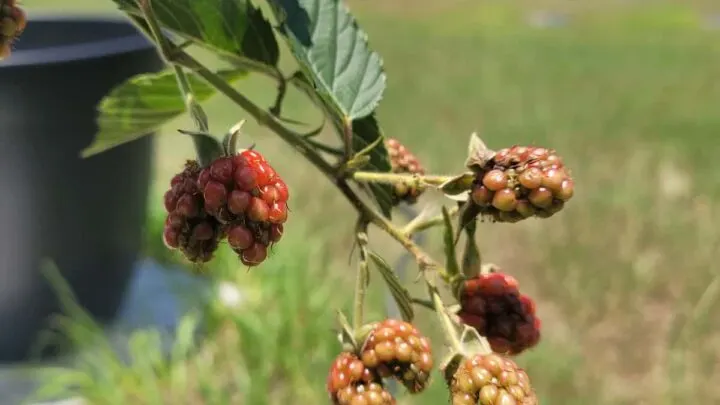
Watermelon
Watermelon plants usually grow across the ground, but you can train your watermelon to climb instead.
You will need a sturdy trellis to hold your watermelons, but that might not be a surprise since watermelons grow to be so heavy. Your trellis will need to be able to hold at least 20 pounds of watermelon!
Watermelons aren’t natural climbing plants, so you’ll also need to tie your watermelon tendrils to the trellis for them to climb.
Once your watermelons start to grow, you may also want to use a sling to keep your watermelon up. Otherwise, they’ll snap right off and fall!
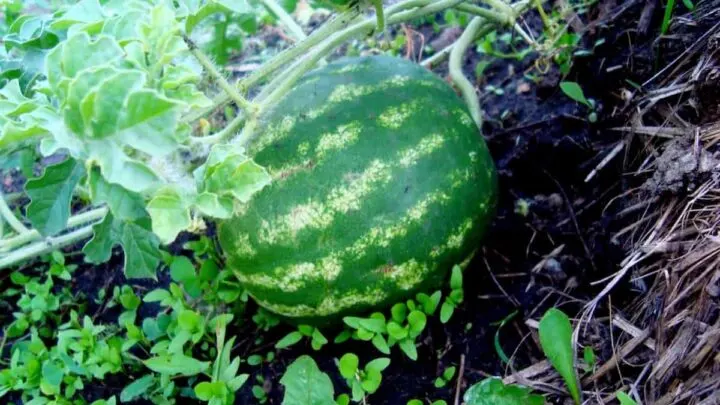
Raspberries
Raspberries, like blackberries, need room to grow in full sunlight.
Raspberries, on the other hand, don’t take as long as blackberries to grow, but raspberries do not have a long lifespan.
I mean that raspberries spend one year growing the vine and leaves. Your raspberry plant will bear its fruit the next year.
Your raspberry plant will not have another fruitful growing season, though; raspberries plants die off after bearing fruit.
Once you collect your raspberries from the vines, you can cut the plant down to the ground because it will not grow and fruit again.

Blueberries
Like other berries, your blueberry plant will take a few years to grow and harvest a substantial crop.
You’ll notice that your blueberry crop is light for the first two or three years. Your blueberry plant will produce more heavily after five years of growth.
Your blueberry plants will require a few things when it comes to soil like:
- Proper drainage
- Acidic soil
- Well-worked and tilled
Overall, your blueberry plant will be relatively self-sufficient, so they will not require much attention if you do not consider yourself a gardener.
Blueberries differ from other types of berries because they grow in bushes, but a trellis can still be helpful for your blueberries to climb, even if it is unnecessary.
Since blueberries grow on bushes, they do not need to climb. Giving blueberries a structure to lean against and climb on will help support the weight of the blueberry bush.
As your blueberry bush grows, it may become too heavy to support its weight, and a trellis will help it continue to grow outward.
Like other berries, you’ll still need to wait almost ten years for your blueberry harvest to be at its full capacity.
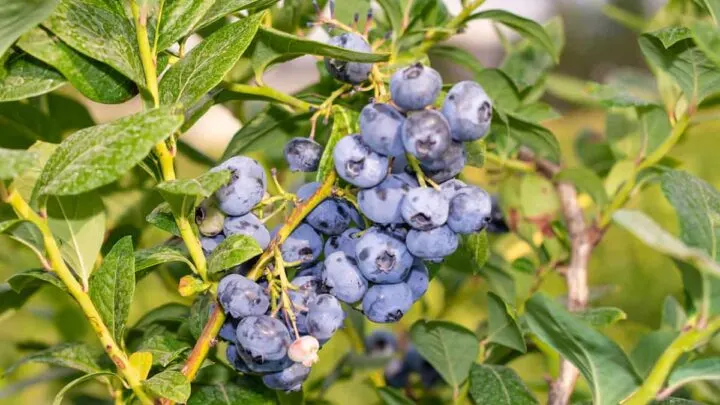
Gooseberries
Of all the berries, gooseberries will be some of the quickest to begin to produce berries, so you will only have to wait a year or two for your first harvest.
Gooseberries also do not require as much space as other climbing berries, like raspberries or blackberries, because they can be trained to grow in a compact space.
If you really are lacking space in your garden, you can grow your gooseberries in a container on your deck or porch. That way, you’ll be able to pick a handful right off the vine for a perfect snack!
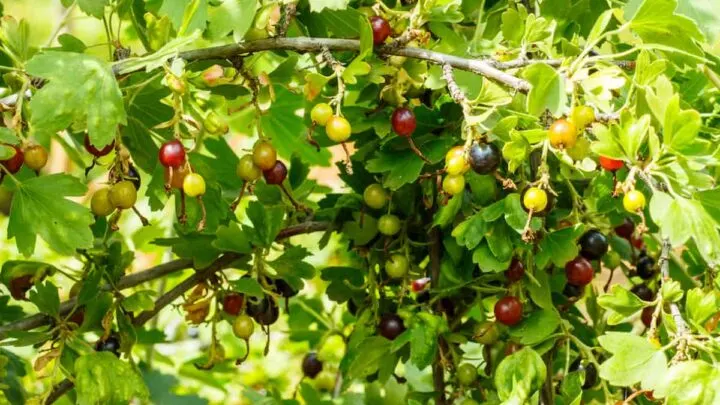
Cucumber
Cucumbers are a refreshing summer plant that takes well to growing on a trellis.
Cucumbers grow well on a trellis because the tendrils can be trained by themselves to grow vertically. As your cucumber continues to grow, all you need to do is gently twist the vines around the structure you are using as a trellis.
Using a trellis to help cucumbers climb is a great option because:
- The cucumbers are easier for you to pick
- The cucumbers are less susceptible to pests that are on the ground
- Wildlife will not be able to get to your cucumbers as easily
Your cucumber plant may also prefer to grow upward rather than across the ground, so make sure that your trellis is tall enough to accommodate your cucumber plant. You may have a plant that grows up to five or six feet tall!
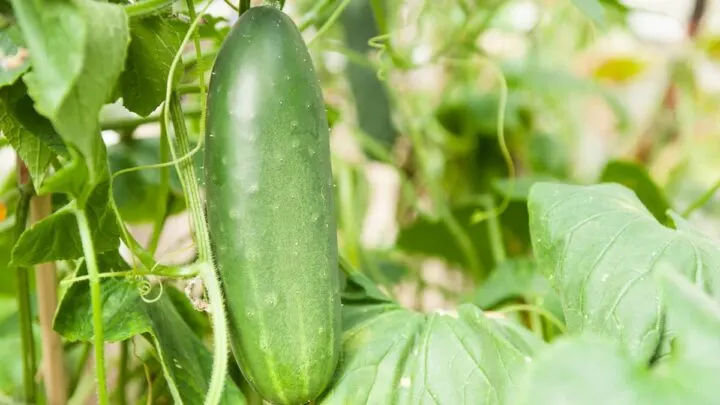
Cantaloupe
Cantaloupe is a great summer plant to grow in your garden, especially if you live in a climate that has a warmer summer.
Cantaloupes won’t naturally trellis, so you will have to tie your cantaloupe tendrils to your trellis so that they grow upward.
Here are some options for ties that won’t break the tendrils of your cantaloupe:
- Old cotton t-shirt
- Scrap cloth
- Fabric rope
Much like watermelon, you will need a sturdy trellis that is about twenty feet wide – you’ll need a lot of space to grow cantaloupes!
Your cantaloupe will need about two and a half months to grow, and you may also need to create a sling to keep them on the vine until they’re ready to pick!
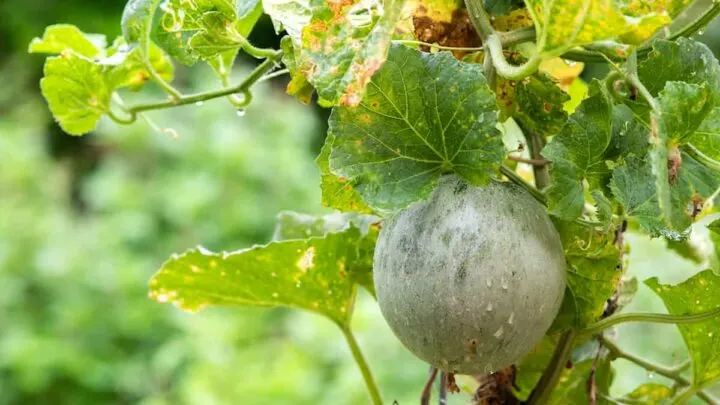
Honeydew
Honeydew melons are a great climbing fruit option if you’re looking to harvest in two to three months. Compared to some of the other plants on this list, that isn’t long at all!
It may not feel right to do, but you should sew the seeds of your honeydew melon before the season’s last frost. The ground may be hard to dig, but it’ll be worth it!
Don’t forget to also put your trellises in the ground and leave enough room for your honeydew melons to grow.
Honeydew melons take more work to grow than some of the other fruits on this list. Honeydew melons need moist soil to grow and can die if the soil becomes too dry.
Keep an eye out for the following signs to know when your honeydew melons are ready to pick:
- The outside rind will be an even grey color
- The leaves of the plant will start to dry out
- There is a hollow sound to the melon when it is tapped

Hi there, my name is Allie and welcome to my blog; GareningWithAllie!
Much of what you see written here is just our personal experiences with gardening. Along with the content I write here, there is also a unique collection of gardening topics covered by some of our close friends. I hope you find everything you read here to be helpful, informative, and something that can make your gardening journey the most lovely experience ever! With that said, Happy Gardening!
